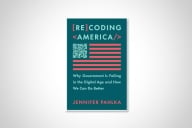You have /5 articles left.
Sign up for a free account or log in.
Anthony Carnevale proposed this week that one way to help ensure that colleges have the capacity to offer enough high-demand programs is to charge more for them. Specifically, he proposed different prices for different majors. The idea is that high-cost programs with excellent employment outcomes for students—say, cybersecurity or nursing—will still attract students even with higher prices, and the new resources generated through higher tuition will allow colleges to pay the costs entailed in running such programs. Meanwhile, majors like English or history will charge less.
I’m not sold on it, but I can see how he got there.*
Carnevale is a veteran analyst of higher education. He points out, correctly, that what look like differences in earnings between graduates of different institutions are often, in fact, differences in earnings by various majors. Graduates of social work programs tend to make much less than graduates of engineering programs, so the schools that focus more on the latter will tend to have higher average earnings. (For present purposes, I’ll just register my oft-expressed frustration that community college graduates’ earnings are usually folded into those of the highest degree level they subsequently attained. This leads to a spate of false negatives about the payback of transfer-focused degree programs.) Colleges mostly charge single tuition rates across entire curricula, though, so the students likely to earn less wind up subsidizing the students likely to earn more. That’s especially true when you contrast class sizes and equipment needs in Intro to Psych with, say, any allied health program. Differential tuition is offered as a way to recognize that some students are getting more than others.
The idea isn’t entirely new. Colleges have charged lab fees for courses with significant consumables, such as lab sciences, for a long time. Program fees have also been around for a while to help colleges offset the costs of programs that are uncommonly expensive to run, such as allied health or automotive tech. Depending on the magnitude of the program fees, one could argue that some of them amount to differential tuition by another name. (The name matters in some contexts, though. Some scholarships apply only to tuition and not fees. In some states, tuition goes to the state but fees remain on campus. The difference may not mean much to students, but it can matter tremendously in terms of covering costs.)
The root of the issue is that some programs really are much more expensive to provide than others. Annoyingly, the ones that legislators and the public say they most want tend to be the most expensive, even as legislators and the public are reluctant to pay more. High industry pay is a double-edged sword: it’s terrific for the students who get through, but it makes attracting faculty much more difficult. It’s hard to compete with industry salaries in hot fields. Having personally done searches for both, I can attest that it’s much easier to attract good full-time faculty at community college salaries in English than in computer science. If higher tuition in the latter could be used to pay well enough to attract qualified faculty in that field, then presumably it would be easier to build capacity to meet industry and student demand.
So, what’s the problem?
In a word, equity.
Getting more low-income students and students of color into high-demand, high-wage fields requires keeping those fields affordable. Students who can barely afford college as it is may decide that the discount degrees are the only ones within reach. Over time, that could tend to reproduce economic segregation by field, with the high-wage fields open only to those who can afford the up-front premium. Right now, middle-class students taking psychology effectively cross-subsidize low-income students taking engineering. Remove that subsidy, and the low-income students in engineering have a heavier burden. The #RealCollege movement has shown decisively that cost barriers matter most to those with the least; if we increase those barriers as a matter of policy, we can predict who will be most impacted.
The usual solution offered is some sort of targeted scholarship program, but that has limits of its own. It only helps a small number, selection criteria are necessarily charged and it leaves out those who don’t know how to navigate the system. Our collective experience with the high-tuition, high-aid model shows the limits of the approach in terms of equity. Between sticker prices, paperwork issues and the vagaries of complicated student lives, high aid often falls short of its promise.
The obvious long-term answer, of course, is more public operating support. Short of that, direct support from employers for certain kinds of programs would make sense; if they’re the beneficiaries, then it seems fair to ask them to put some skin in the game. It happens here and there, but it’s very much the exception. It needs to become more common. Until then, though, doing away with cross-subsidies could easily wind up shutting out the students we most want to reach. Being responsive to employer needs is good, and improving equity is good; we need to ensure that those two goods don’t crash into each other.
*I wish sentences like this were more common on the internet.



